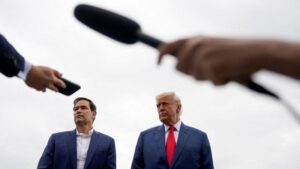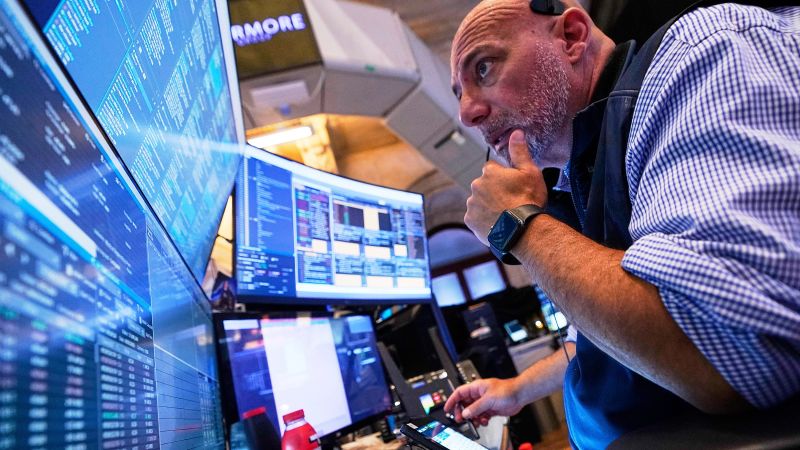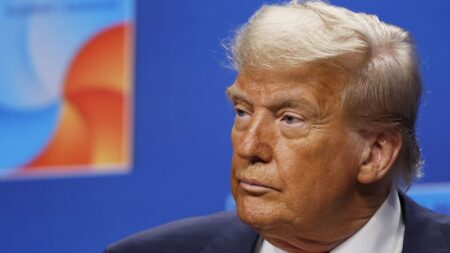In recent months, the financial landscape in the United States has undergone remarkable fluctuations, particularly within the stock market. This remarkably volatile environment was apparent beginning on April 8, when many experts on Wall Street warned that stocks were teetering on the edge of a bear market. Fast-forwarding just 80 days, a stark contrast has emerged, as the market now seems poised to achieve record highs. Specifically, reports suggest that the S&P 500 index is set to initiate trading in uncharted territory, a significant turnaround since its last all-time high on February 19.
The current state of the S&P 500 futures indicates a bullish trend, with gains of 0.3% recorded just prior to the market opening. Notably, the index had closed just shy of its record high the previous Thursday, setting the stage for potential celebration amongst investors. Concurrently, futures for the Nasdaq Composite index also reported an uptick of 0.4%, suggesting that it might reach its own all-time high for the first time since December 16, 2024. The Nasdaq, emblematic of the tech sector, has been particularly buoyed by advancements in artificial intelligence, which have sparked a tech rally in recent months. In fact, the smaller Nasdaq 100, composed of leading technology stocks, achieved record status just earlier this week.
Meanwhile, the Dow Jones Industrial Average, though hindered by leading players like UnitedHealth, Apple, Merck, and Nike, showed a respectable rise with futures climbing 130 points or 0.3%. Despite this progress, the Dow still needs approximately 1,600 points to reach its historical peak, underscoring ongoing vulnerabilities within this index. Interestingly, the journey of the stock market since mid-February has been nothing short of extraordinary. At that time, fears erupted among traders when former President Donald Trump announced historic tariffs that many economists warned could accelerate inflation and potentially usher in a recession.
In light of these tariff announcements, the Trump administration intensified its stance, leading to significant tariff hikes that affected numerous nations, with some tariffs soaring as high as 50%. The tariffs imposed on China similarly reached staggering levels, surpassing 145% for select products, establishing a formidable barrier against America’s second-largest trading partner. However, as a response to rising tensions in economic markets, the administration decided on April 9 to temporarily suspend these “reciprocal” tariffs for 90 days, hinting at a possible shift in trade dynamics.
In subsequent developments, a significant breakthrough appeared on the horizon: China signaled intentions to reopen its rare earth market to the United States. This announcement, coupled with progress in trade frameworks with both the United Kingdom and China, has fostered renewed investor confidence that previous trade disputes might eventually yield positive outcomes. Yet amid these developments, a 10% universal tariff remains alongside notable tariffs on steel, aluminum, and automobiles. Nonetheless, the market has largely glossed over these trade concerns, seeking solace in evolving narratives of optimism.
The surge in artificial intelligence, attributed to booming sales for Nvidia’s chips and a bipartisan effort to deregulate this burgeoning field, has been a predominant factor in propelling stock prices and guiding investor sentiment beyond trade war concerns. Furthermore, hopes of an impending rate cut from the Federal Reserve, backed by strong economic indicators and low inflation rates, have contributed to a generally optimistic outlook for stocks as of late.
However, challenges lurk on the horizon for the stock market. Should Congress reach an impasse regarding the domestic policy bill – which also includes critical provisions for raising the debt ceiling – there is a risk that the nation could come perilously close to defaulting on its obligations. In addition, the looming expiration of the 90-day pause on reciprocal tariffs could lead to renewed increases if further trade agreements fail to materialize.
Concerns about geopolitical stability in the Middle East persist, particularly following the recent fragile ceasefire established between Israel and Iran. Finally, the existing tariffs, notably, threaten to drive up prices, potentially stymying economic growth in the near future. Valuations for stocks are also soaring despite doubts regarding the sustainability of earnings expectations. The S&P 500’s price-to-earnings ratio has surged beyond 23, signifying increased expense in comparison to projected profits.
Despite an atmosphere of celebration welcoming potential record highs, uncertainties loom large. It remains unclear how long this bullish market trend will endure, hinting at potential vulnerabilities in the road ahead as investors watch and wait for forthcoming developments.











